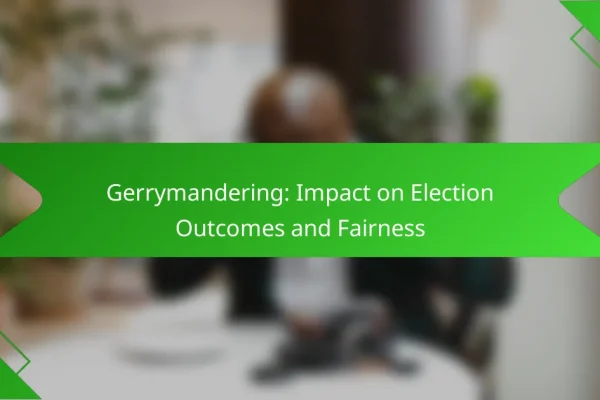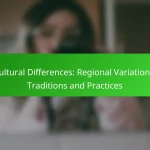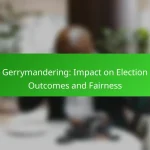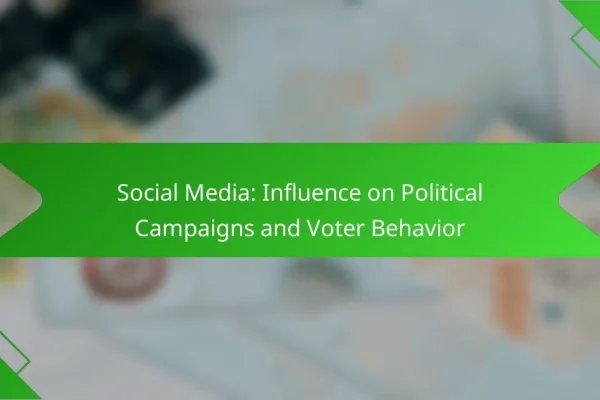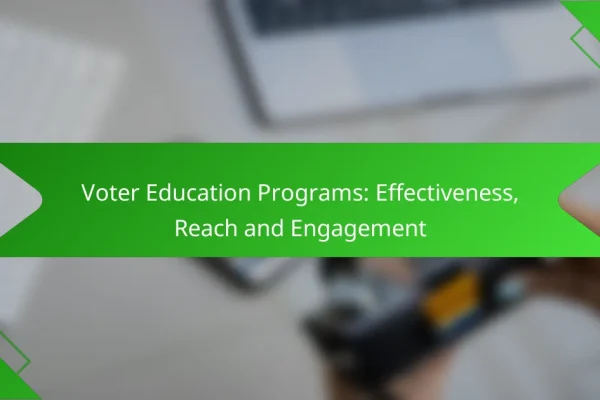What are the key issues in the US political landscape?
The US political landscape is shaped by several key issues that significantly influence public policy and voter behavior. Among these, partisan polarization, voter suppression, campaign finance, and gerrymandering stand out as critical factors affecting democracy and governance.
Partisan polarization
Partisan polarization refers to the growing divide between political parties, particularly the Democrats and Republicans, leading to increased hostility and decreased cooperation. This polarization affects legislative processes, as bipartisan support for policies has become rare, often resulting in gridlock.
Voters are increasingly aligning with their party’s ideologies, which can create echo chambers and limit exposure to diverse viewpoints. This trend complicates efforts to address issues that require cross-party collaboration, such as healthcare reform and climate change initiatives.
Voter suppression
Voter suppression encompasses various tactics aimed at discouraging or preventing specific groups from voting, often targeting minorities and low-income populations. Methods include strict voter ID laws, purging voter rolls, and reducing polling places in certain areas.
These practices can significantly impact election outcomes by lowering turnout among affected groups. Advocacy for more accessible voting options, such as mail-in ballots and extended voting hours, is crucial to combat voter suppression and ensure fair representation.
Campaign finance
Campaign finance involves the funding of political campaigns, which has become increasingly influenced by large donations from individuals and organizations. The Supreme Court’s Citizens United ruling in 2010 allowed for unlimited spending by corporations and unions, leading to concerns about the disproportionate influence of money in politics.
Transparency in campaign financing is essential for maintaining public trust. Voters should be aware of the sources of campaign contributions and advocate for reforms that promote equitable funding, such as public financing of campaigns.
Gerrymandering
Gerrymandering is the practice of drawing electoral district boundaries to favor one party over another, often resulting in oddly shaped districts. This manipulation can entrench political power and dilute the voting strength of particular demographic groups.
Efforts to combat gerrymandering include advocating for independent redistricting commissions that create fairer district maps. Engaging in public discussions about districting processes can help promote transparency and accountability in the electoral system.
How do political parties influence elections in the US?
Political parties play a crucial role in shaping elections in the US by organizing candidates, mobilizing voters, and framing the political discourse. Their strategies and tactics can significantly affect voter turnout and the overall outcome of elections.
Democratic Party strategies
The Democratic Party often focuses on broadening its voter base through inclusive policies and outreach efforts. This includes targeting urban areas and minority communities, emphasizing social justice, healthcare access, and climate change initiatives.
In recent elections, the Democratic Party has utilized digital campaigning and grassroots organizing to engage younger voters. Mobilization efforts often include door-to-door canvassing and phone banking, aiming to increase participation among demographics that traditionally lean Democratic.
Republican Party tactics
The Republican Party typically emphasizes conservative values, economic growth, and national security in its electoral strategies. This often involves appealing to rural voters and working-class individuals by promoting tax cuts and job creation initiatives.
In addition, the Republican Party has effectively used targeted advertising and social media campaigns to reach specific voter segments. Strategies may include focusing on issues like immigration and crime, which resonate strongly with their base, and utilizing high-profile endorsements to bolster candidate visibility.
What role do interest groups play in US politics?
Interest groups significantly influence US politics by advocating for specific issues and mobilizing public opinion. They engage in various activities to sway policymakers and shape legislation that aligns with their interests.
Lobbying efforts
Lobbying is a primary method through which interest groups exert influence in the political arena. These groups employ lobbyists to communicate directly with lawmakers, providing information, research, and arguments to support their positions. This can include arranging meetings, providing testimony during hearings, or drafting legislation.
Effective lobbying often requires a deep understanding of the political landscape and the interests of various stakeholders. Interest groups may focus on specific issues such as healthcare, education, or environmental regulations, tailoring their strategies to resonate with the priorities of legislators and the public.
Political action committees (PACs)
Political action committees (PACs) are organizations that collect and distribute funds to political candidates who support their causes. PACs play a crucial role in financing campaigns, allowing interest groups to amplify their influence through monetary contributions. They are subject to federal regulations that limit the amount of money they can contribute to candidates and parties.
Many interest groups establish PACs to ensure their voices are heard during elections. By contributing to candidates who align with their interests, PACs help to create a favorable political environment for their issues. However, it is essential for these organizations to maintain transparency and adhere to legal guidelines to avoid potential pitfalls related to campaign finance laws.
How does media affect the political landscape in the US?
The media plays a crucial role in shaping the political landscape in the US by influencing public opinion, framing political narratives, and facilitating communication between politicians and constituents. Both traditional and social media platforms have distinct impacts, affecting how information is disseminated and consumed by the public.
Influence of social media
Social media has transformed political communication by allowing direct interaction between politicians and voters. Platforms like Twitter and Facebook enable candidates to share their messages instantly, bypassing traditional media filters.
Moreover, social media algorithms often prioritize sensational content, which can amplify polarizing views and misinformation. This environment encourages echo chambers, where users are exposed primarily to viewpoints that align with their own.
To navigate this landscape, users should critically evaluate sources and seek diverse perspectives to avoid being misled by biased information.
Role of traditional media
Traditional media, including newspapers, television, and radio, continues to play a significant role in informing the public about political issues. Established outlets often adhere to journalistic standards, providing fact-checked news that can help counter misinformation prevalent on social media.
However, traditional media faces challenges such as declining viewership and revenue, leading to cutbacks in investigative journalism. This can result in less comprehensive coverage of important political events and issues.
To stay informed, individuals should consume news from a variety of traditional sources and consider subscribing to reputable outlets that prioritize quality journalism.
What are the major upcoming elections in the US?
The major upcoming elections in the US include the 2024 presidential election and the midterm elections, both of which will significantly shape the political landscape. These elections will determine key leadership positions and influence legislative priorities at both federal and state levels.
2024 presidential election
The 2024 presidential election is set for November 5, 2024, and will determine the next President of the United States. Candidates from the major political parties will campaign vigorously, focusing on issues such as the economy, healthcare, and climate change.
Voter turnout is crucial in presidential elections, often ranging from 50% to 60% of eligible voters. Engaging in early voting and understanding state-specific voting regulations can enhance participation and impact the election outcome.
Midterm elections
Midterm elections occur every four years, halfway through a presidential term, with the next ones scheduled for November 8, 2022. These elections will involve all 435 seats in the House of Representatives and about one-third of the 100 Senate seats, along with numerous state and local offices.
Midterm elections typically see lower voter turnout compared to presidential elections, often around 40% to 50%. Voters should be aware of local candidates and ballot measures, as these can significantly affect community policies and governance.
How do demographic changes impact US politics?
Demographic changes significantly influence US politics by altering voter preferences and party alignments. As populations shift in terms of age, race, and education, political strategies must adapt to these evolving dynamics.
Shifts in voter demographics
Voter demographics in the US are changing, with increasing diversity and varying age groups influencing electoral outcomes. For example, younger voters tend to lean more towards progressive policies, while older populations may favor conservative approaches. This shift can affect party platforms and campaign strategies.
Additionally, the growing Hispanic and Asian American populations are becoming crucial voting blocs, often prioritizing issues like immigration reform and healthcare. Political parties must engage with these groups to remain competitive in elections.
Urban vs. rural voting patterns
Urban and rural areas in the US exhibit distinct voting patterns that are shaped by demographic factors. Urban voters generally lean Democratic, often prioritizing social issues, environmental policies, and public services. In contrast, rural voters tend to support Republican candidates, focusing on economic growth, agricultural policies, and traditional values.
This divide can lead to significant electoral outcomes, as urban centers may drive Democratic victories in statewide or national elections, while rural areas can sway local contests. Understanding these patterns is essential for candidates aiming to connect with diverse voter bases.
